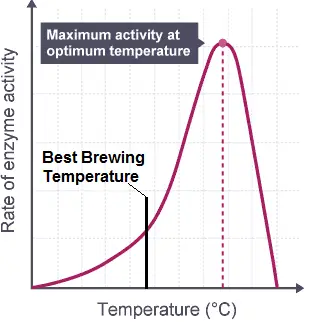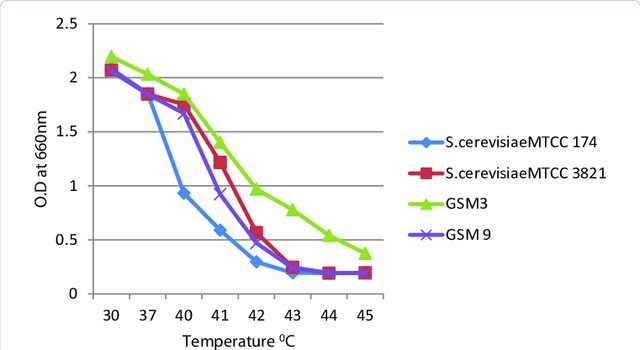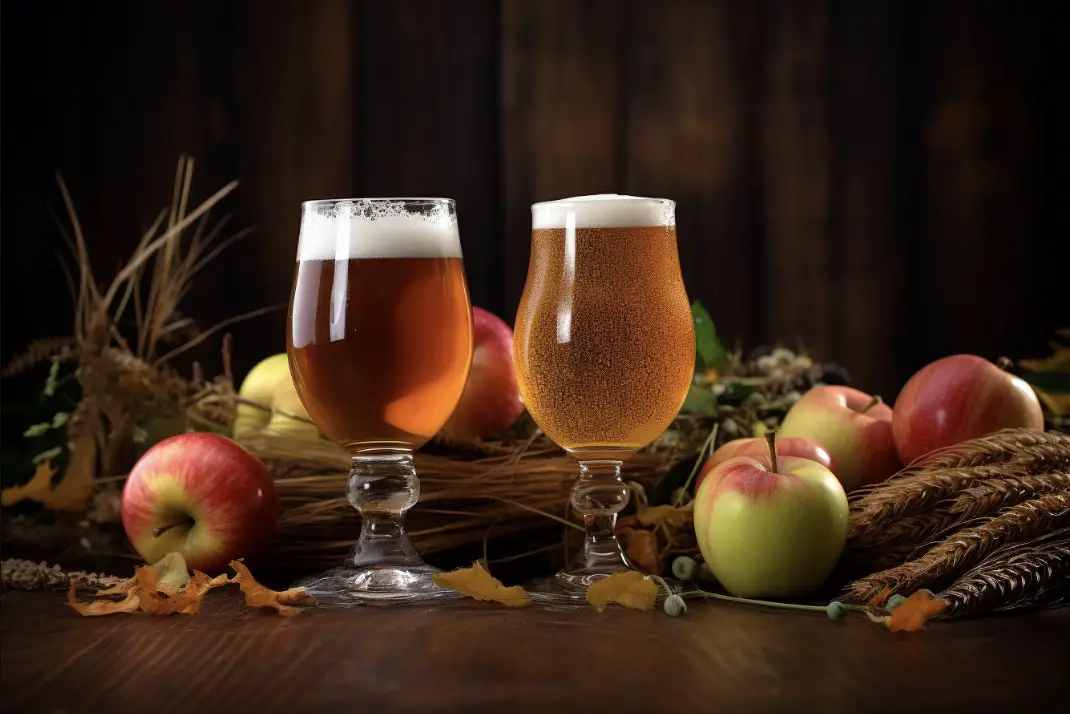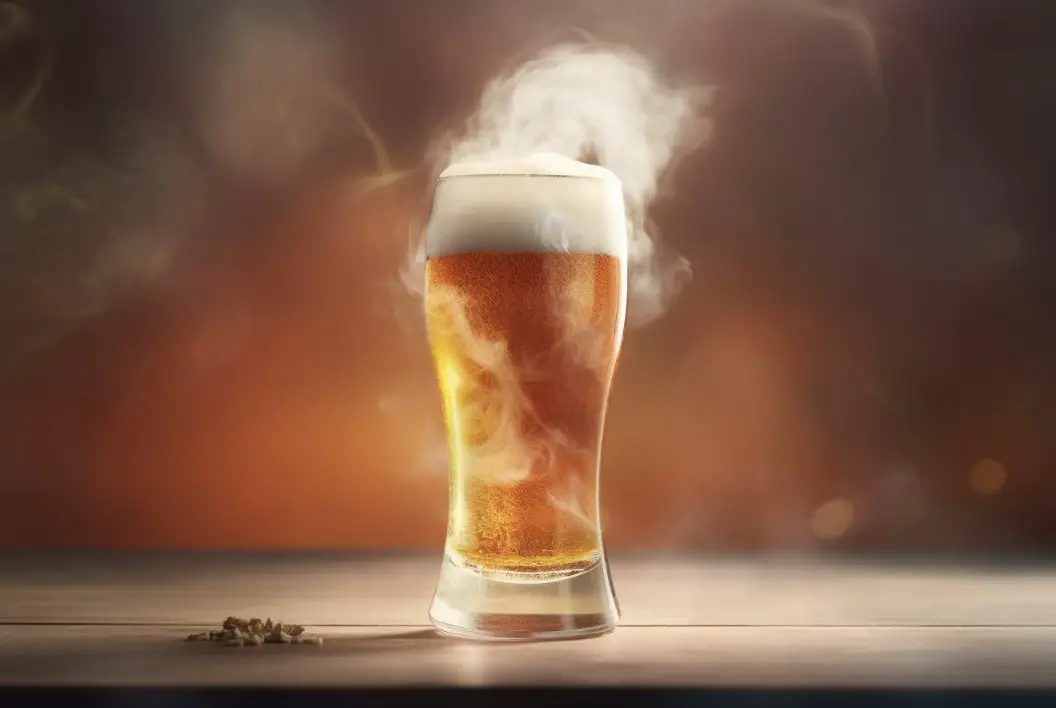Brewing cider is a complicated process that requires a lot of attention. The temperature during fermentation, the type of yeast, and the fermentation time are some of the factors you will have to consider as it does affect the aromatic profile, appearance and alcohol percentage of your final product.
Most yeast strains used for cider fermentation perform best at temperatures between 65°F and 70°F (18-21°C) or just below room temperature. However, most cider professionals prefer the cider brewed at the lower end of this spectrum and often closer to 60°F (15°C) as this tends to retain more of the volatile flavours developed during the brewing process.
Whereas temperature is the most important factor that you are able to control when brewing hard cider, there are also other factors affecting the efficiency of the yeast and the final flavour profile of the cider.

For example, the pH, nutrient content, sulphite addition and sugar (gravity) of the juice used are all important variables affecting the quality and speed of the fermentation process.
However, in this article, we will focus on temperature as this is the most obvious variable that can (fairly) easily be controlled by most home brewers.
The temperature of fermentation is not only going to affect the taste and smell of the final hard cider, but also the speed of fermentation!
What is the optimal temperature for yeast to ferment alcohol?
For most yeast species, the optimal temperature for speed and alcohol production is quite a lot higher than the optimal temperature for a well-balanced, great-tasting cider, wine or beer.
In fact, most yeasts grow best around 86°F (30°C), which is much higher than what most professional brewers would go to!

This is because, at these temperatures, many of the aromatic compounds produced by the yeast will evaporate, just as the CO2, leaving a somewhat boring and flat end product.
However, if your main goal is to produce a high amount of alcohol in the shortest possible time – go ahead and crank up the temperature to around 86°F and you will likely see your fermentation finishing 2 to 5 times faster than at 60°F!
But keep in mind that too fast a fermentation can also affect the taste of stronger, distilled, cider drinks such as applejack and ice cider and that these require special permissions to make.
How hot is too hot for fermenting?
When making cider it is important to make sure that your fermentation vessel is not too hot. If it is too hot, the yeast will become overactive and produce off-flavors in your cider and in the worst case die off before the fermentation is finished!
Because some flavours tend to evaporate and others are more easily converted into milder compounds at higher temperatures, a fermentation at too high a temperature will lead to a less interesting, somewhat flat-tasting cider or malnourished yeasts that produce sulfur smells!
As seen from the graph shown, even a fairly heat-tolerant yeast like S. cerevisiae, will not ferment efficiently above 38°C (100°F).

While some yeasts, like the “Kveik” yeast used in traditional Norwegian brewing, can tolerate up to around 40°C, it does not mean that this is its optimal temperature and the fermentation done with these strains is often carried out at room temperature.
Other traditional hardy yeasts such as the Lalvin EC-1118 champagne yeast will tolerate a wide range of temperatures from 7° to 35°C (45° to 95°F) and is also tolerant to alcohol concentration, pH and other variations in the brew.
On the other hand, cider is not just a question of yeast growth as a wild fermentation will also contain lactic acid bacteria that will affect the flavour.
These bacteria perform the malolactic fermentation that is responsible for the smooth, less sharp, taste resulting from the conversion of malic acid to lactic acid.

The lactic acid bacteria are also used for yoghurt production and work better at a slightly higher temperature than most yeasts.
Therefore it sometimes makes sense to increase the temperature at the end of yeast fermentation to facilitate the conversion of malic acid to lactic acid.
The growth of lactic acid bacteria is also something to consider in naturally fermented wines and sour beers!
What temperature is too cold for fermenting?
You’ll also not want your cider to get too cold. If it gets too cold, the fermentation process will slow down, might even stop or “crash”, and your cider might not turn out as crisp and delicious as you wanted.
As seen from the figure on yeast growth rate vs. temperature, it is evident that most standard brewing yeasts do not grow much below 40°F (5°C). A typical refrigerator temperature.

However, yeasts used for bottom fermentation of beers, e.g. as used for lagers, are much more cold tolerant than those used for ale beers.
A lager yeast can work fine at temperatures around 40-50°F (5-10°C), but will still be much slower than that of an ale yeast fermenting at room temperature.
For ciders, the wild yeasts found on the apples are often adapted to colder temperatures and will ferment down to around 40°F (5°C).
However, in my experience, they work best in terms of speed and flavour at around 60°F (15°C).
I wrote a whole post about the many types of yeasts used in cider brewing in case you are interested.
What is the best secondary fermentation temperature for cider?
In terms of secondary fermentation, the best temperature is again between 65 and 75 degrees Fahrenheit.
However, you might want to experiment with letting your cider secondary ferment a bit longer at a lower temperature (around 60 degrees Fahrenheit) if you’re looking for a more mellow flavour in the end.
Personally, after the primary fermentation is over, I move my cider vessels to around 60°F. After a few months and one or two rackings, I then bottle the cider and return them to the initial fermentation temperature of around 70°F to get the secondary fermentation going.

After a week or two, when the carbonation should be done, I move the bottles to my basement at a temperature of around 60°F for long-term storage.
What temperature do you carbonate cider at?
When carbonating in bottles via a secondary fermentation, the temperature is not super critical as the fermentation will eventually stop when the sugar is used up.
However, when force carbonating your cider, there is an intricate relation between pressure and temperature that determines how much CO2 will be dissolved in the final product.
In short, the colder the cider, the more CO2 can be dissolved in it and the lower pressure you need to do so!
So a colder cider (to the point of freezing!) is better for forced carbonation.
That is, the fastest and most efficient way to force carbonate cider is at lower temperatures.
Carbonation is typically done when kegging hard cider, but can also be done using a simple SodaStream setup.
The exact correlation between pressure and temperature can be found in a carbonation chart like this one.
But you can also just use our carbonation calculator to figure out how much priming sugar to add at a given temperature!
Once all the carbon dioxide is dissolved in the cider, it can be left for as long as you want and no more carbonation will take place unless you change the pressure or temperature of the brew.
In conclusion – at what temperature should you ferment cider?
So there you have it! In general, the best temperature for brewing cider is between 65 and 75 degrees Fahrenheit.
But if you want a more aromatic profile, you can try starting out at a higher temperature after which you store the cider at a lower temperature before initiating the secondary fermentation.
Another benefit of this method is that, the yeast may leave some more residual sugar behind and also flocculate better to make the final cider clear.
So remember to keep an eye on your fermentation vessel and avoid letting things get too hot or too cold!
If you are more interested in the influence of temperature on the long-term storage of cider, head over to my recent post on optimal storing of hard cider!




